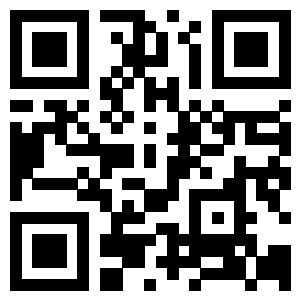Time:2020-09-05 18:25:45 Edit:ShenXun PV:571
5G, the hottest Internet topic from 2019 to date, is the ultimate goal of high-tech companies in various countries from the perspective of scientific research. From the perspective of life, it is the expectation of people all over the world.
He can change lives and change markets. At present, there are not many countries in the world with 5G core technology, and everyone is busy with how to deploy 5G faster and more efficiently.
From the current situation, 5G is very close to our lives. It is estimated that from the end of this year to the beginning of 21 years, full and formal 5G commercial use will be realized.
So, what are the basic elements that enterprises need to understand to accelerate the deployment of 5G? Anwei Wireless (www.aw168.cn) combined its own 5G experience and summed up seven elements, then please see below
1. Network density and small base stations
5G users will need more cellular base stations to substantially expand network capacity and support the growth of data traffic. This has prompted mobile network operators (MNOs) to rush to adopt small base stations (small low-power base stations installed in buildings, lampposts, etc.) in densely populated urban areas to increase network density. These small base stations will help MNO satisfy users' thirst for large amounts of data and improve service quality.
2. Spectrum collection
5G requires a lot of bandwidth. Larger bandwidth allows operators to increase capacity and increase data rates, allowing users to download large files faster and obtain high-resolution jitter-free streaming media. The design of the physical layer and higher layers is independent of frequency, but separate radio performance requirements are established for each layer. The lower frequency range (FR1) is also called sub-7GHz, which is the 410-7,125MHz frequency band; the higher frequency range (FR2) is also called millimeter wave (mmWave), and the range is 24.25-52.6GHz.
In order to obtain the bandwidth in FR1 and FR2, more spectrum must be allocated. Currently, regulatory agencies in about 40 countries and regions have allocated new frequencies and realized the re-allocation of LTE spectrum, however, this is far from enough. According to GSA data, 54 countries plan to allocate more spectrum from now to the end of 2022 to solve at least part of the problem as much as possible.
3. The evolution of 4G to 5G networks
The 5G Radio Access Network (RAN) is designed to work with existing 4GLTE networks. 3GPP allows multiple new radio (NR) deployment options. Therefore, as shown in the figure below, MNOs can migrate to 5G more easily by changing from non-independent (NSA) to independent (SA) networking.
4. Dynamic spectrum sharing
Dynamic Spectrum Sharing (DSS) is a new technology that can further help achieve a smooth migration from 4G to 5G. With DSS, operators can allow 4G and 5G users to share the same spectrum without having to dedicate each part of the spectrum to 4G or 5G. This means that operators can use their networks more efficiently and allocate capacity based on user needs to optimize user experience. Therefore, as the number of 5G users increases, the network can dynamically allocate more capacity for each user in the total capacity.
5. Millimeter wave (mmWave)
5G networks can use the millimeter-wave FR2 spectrum to provide the highest data rate, in which a wide range of bandwidth can be used. Millimeter wave is now a reality: 5G networks are using it for FWA and mobile devices, and will be used in other use cases in the future. With the expansion of 5G network deployment and the emergence of home appliances, operators are expected to extend FWA to more homes.
6. Massive MIMO
MIMO (Multiple Input Multiple Output) improves data speed and network capacity by using multiple antennas to transmit multiple data streams with the same bandwidth. Many LTE base stations today already use up to 8 antennas to transmit data, but 5G introduces massive MIMO, which uses 32 or 64 antennas, and even more in the future. Massive MIMO millimeter waves are particularly important because multiple antennas concentrate the transmission and reception of signals to increase the data rate and compensate for the propagation loss at high frequencies. This greatly improves throughput and energy efficiency.
7. RFFE innovation boosts 5G
The true realization of the 5G vision requires the participation of innovative radio frequency front-end (RFFE) technology. As mobile phones, base stations and other devices become more fashionable and compact, RFFE will need to achieve more powerful performance in less space while improving energy efficiency. Some RF technologies are key to achieving 5G goals; they include:
Gallium nitride (GaN). GaN is very suitable for high-power transistors that can work at high temperatures. The potential of GaNPA in 5G has just begun to be realized. Its high radio frequency power, low DC power consumption, small size and high reliability enable equipment manufacturers to manufacture smaller and lighter base stations. With GaNPA, operators can meet the high-efficiency omnidirectional radiated power (EIRP) output specifications of millimeter wave transmission with fewer antenna array units and lower power consumption. This makes the system lighter and less expensive to install.
BAW filter. The number of frequency bands and carrier aggregation (CA) combinations used by 5G has increased significantly, and it needs to coexist with many other wireless standards, which means that high-performance filters are essential to avoid interference. Surface Acoustic Wave (SAW) and Bulk Acoustic Wave (BAW) filters occupy a small area, have excellent performance and are affordable, and are the main filter types used in 5G mobile devices.
Tel
021-69986378
13681808117


Website
ly@eflearning.com